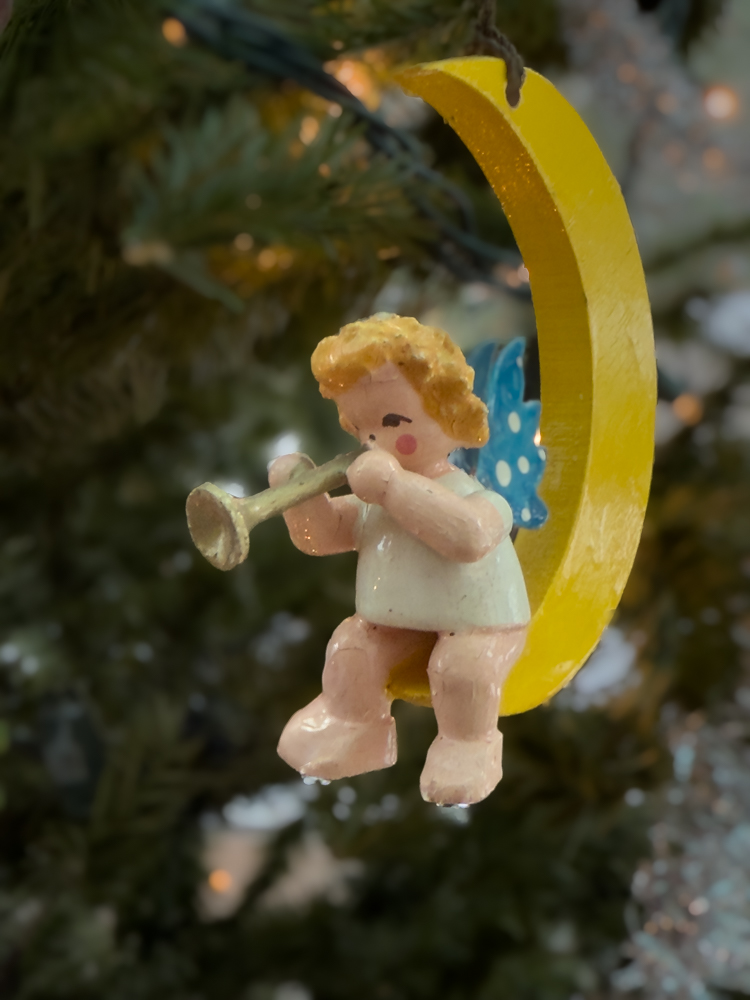These wooden ornaments are profoundly meaningful to me, representing a connection to my grandparents and their home town Sonneberg, Germany. This small town became a global hub for the production of toys and Christmas ornaments. It was celebrated as the “Weltspielzeugstadt” (World Toy Town), and my family was deeply connected with that industry. These ornaments remind me of the region’s craftsmanship and my family’s role in contributing to this cultural legacy. Passed down through my father, these delicate figures likely date back to the 1920s or earlier.



Sonneberg’s artisans were renowned for their meticulous craftsmanship, and these ornaments embody that tradition through their finely carved details, carefully painted features, and the unique assembly of delicate wings and accessories. Each piece reflects the precision and artistic flair that defined Sonneberg’s toy-making legacy. The figures’ intricate designs and vivid yet delicate paintwork stand as witness to a time gone by.
The symbolism woven into these ornaments adds spiritual depth. Angels have long served as messengers and guardians in Christian iconography. Elements like the crescent moon harken back to pre-Christian traditions, deepening the connection by evoking its association with feminine energy, intuition, and lunar cycles. On the ornaments, the crescent moon often cradles or frames the angel figures, visually reinforcing its role as a bridge between earthly and divine realms. Incorporated into Christian art, it retained these mystical connotations, blending seamlessly into a new theological framework. Meanwhile, trumpets symbolise announcements of divine messages, circular frames suggest unity and eternity, and the flying poses capture the angels’ ethereal, spiritual mobility.
Crafting such ornaments was a labour-intensive process, reflecting the dedication and skill of Sonneberg’s artisans. The figures were hand-carved from softwoods like pine or spruce, their delicate features shaped with fine tools. Artisans painted them using water-based or milk-based paints, applying soft pastel tones and detailed facial expressions with small brushes. The assembly of modular parts, such as wings or accessories, allowed for varied and unique designs. A light varnish often finished the pieces, providing protection and a subtle sheen. This process, steeped in tradition, ensured each ornament was unique and lovingly made.
Leave a Reply